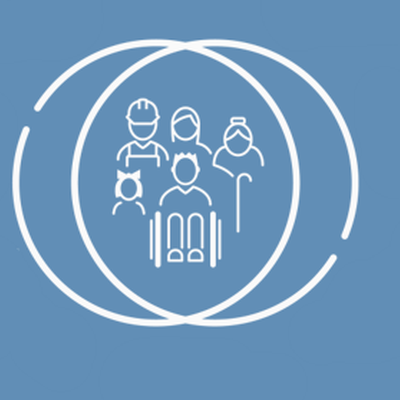The European Commission has created a guidance package for humanitarian and development staff with latest insights and strategies on working with social protection in fragile, conflict and displacement situations.
Despite global development gains, one in every 70 people around the world is caught up in crisis and urgently needs humanitarian assistance and protection.
in 2018, 68.5 million people worldwide were displaced by war or violent conflict, with little evidence suggesting the number will decrease in 2019. Photo © EU/ECHO/Martin Karimi
More and more people are also being displaced by conflict in countries like Syria, South Sudan, Yemen and Iraq.
The latter, for instance, though finally on the path to recovery, has yet to find the means to accommodate nearly 2 million internally displaced people and 4 million returnees.
Overall in 2018, 68.5 million people worldwide were displaced by war or violent conflict, with little evidence suggesting the number will decrease in 2019.
As the gap between funding and needs continues to grow, humanitarian interventions are becoming more frequent, severe, complex and protracted, with the average crisis now lasting more than nine years - up from 5.2 years in 2014.
Humanitarian interventions are becoming more frequent, severe, complex and protracted
This has led to a growing consensus that donors and aid organisations must work increasingly together. International commitments - such as the 2030 Agenda for Sustainable Development and the Grand Bargain - have called for closer links between humanitarian and development programming, with social protection identified as a promising avenue for common action.
Guidance package
But while a wealth of knowledge exists on providing social protection in relatively stable environments, research on how to bridge the humanitarian and development interventions in crisis contexts is still relatively new.
To aid in the process and provide development and humanitarian actors with latest insights and strategies, the three Directorates of the European Commission - DG DEVCO, DG ECHO and DG NEAR - have created a joint guidance package on providing social protection across the humanitarian-development nexus.
What is the SPaN Guidance Package?
The guidance package, first presented at a European Commission staff seminar hosted in Paris in January 2019, provides latest insights on working with social protection in fragile, conflict and displacement situations from humanitarian and development perspectives.
“Humanitarian and development partners need to work together”
“Humanitarian and development partners need to work together to assess the needs, priorities and approaches,” said Nadia Giske, International Aid and Cooperation Officer at DG NEAR.
“We need to do this so that we use the [limited] resources wisely and establish our exit strategies while supporting the development of national strategies, because eventually it is the national authorities who will take charge on this.”
SPaN Reference Document (PDF)
The guidance package provides practical examples of implementing shock-sensitive social protection systems in a variety of crisis contexts. This includes countries where social protection systems are nationally led and those without any such structures in place.
"Living tool"
The guidance package is made up of a reference document; technical, sectoral and thematic content notes; case studies on countries like Iraq, Lebanon, Somalia and Kyrgyzstan; and a number of think pieces on latest research and policy development.
“This package is more than just a document - it’s a living tool,” said Juerguen Hohmann, Social Protection Expert at DG DEVCO, who led the drafting process.
“Social protection is a cross-cutting issue, so we are bringing together experts and views from across the nexus. The aim is to continually strengthen the value of the package with experiences of our field colleagues.”
The guidance package has now been handed over to UNICEF, who will continue to develop it with close coordination from the European Commission. Photo © EU/ECHO/Edward Echwalu
When presented at the EC staff seminar in Paris, the guidance package was said to have come at a pivotal time, putting the spotlight on the need of working together across the humanitarian and development approaches in places not traditionally thought of as ready for social protection.
“The guidance package provides a comprehensive overview of how to work when trying to support social protection in crisis contexts,” said Carina Staibano, Policy Officer at DG ECHO. “This is crucial because we’re used to working with social protection in middle-income countries that are relatively stable and have well-functioning systems but now this document pushes the agenda to also do so in less traditional contexts.”
While created by the three Directorates, the guidance package has now been handed over to UNICEF, who will continue to develop it with close coordination from the European Commission.
“I hope it leads to leverage,” said Luis Lechiguero Paro, Programme Manager at the EU Delegation to Ethiopia and one of the participants of the staff seminar in Paris. “We now need to come together, work closely and exchange information. It’s not going to be easy, but it needs to happen. In humanitarian and development circles, we like to say, one is to save lives, the other livelihoods. And this, I think, will be the challenge.”
✎
Download all the elements of the guidance package from the Social protection across the humanitarian-development nexus group.
This article was written by Bartosz Brzezinski. Photo © UNICEF/Mackenzie Knowles-Coursin







Log in with your EU Login account to post or comment on the platform.